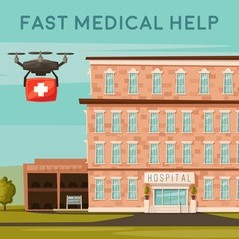The EASA unmanned-aircraft-systems regulations will come into force gradually within 4 months from now. The general concept establishes categories of UAS operations (‘open’, ‘specific’ and ‘certified’) with different safety requirements, proportionate to the risk.
The milestones are already well defined for the open category, and great challenges are ahead for the specific++ and certified categories.
Inside this global picture, on March, 4th, EASA has published: “Easy Access Rules for Unmanned Aircraft Systems [Regulations (EU) 2019/947 and (EU) 2019/945]“. This 265-page document bundles the hard law, i.e. the officially published regulations (implementing rule and delegated rule) with the “soft law”, i.e. related acceptable means of compliance & guidance material (incl. amendments). It will be updated regularly, to incorporate further amendments.
In this context, EASA Member States authority will remain, in order to define zones in their territory where either drones operations are prohibited or restricted (for example to protect sensitive areas), or where certain requirements are alleviated. For operations posing higher risks, an operational risk assessment will define the requirements that the operator needs to comply before flying the drone (SORA).
Concerning medical deliveries, it is important to note that depending on well-defined conditions, medical samples such as uncontaminated blood are not basically considered as showstoppers, for none of the 3 categories.
Conversely, unchecked or contaminated blood shall not be transported in the open category, and, in this case, UAS operations may belong either to specific (under strict conditions) or certified categories.
Let’s go for great medical deliveries opportunities!

